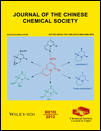Separation of Lipids on Human Very Low-density Lipoproteins by Micellar Electrokinetic Chromatography
Abstract
Liquid-phase and solid-phase extractions (SPE) in combination with a simple micellar electrokinetic chromatography (MEKC) method were used to investigate human very low-density lipoprotein (VLDL) lipids for two healthy donors. At absorbance 200 nm, the effective mobilities and peak areas of the MEKC profiles showed good reproducibility and precisions. A major peak and several minor peaks appeared for the total lipids of native VLDL, but both the peak numbers and areas reduced for the in vitro oxidized VLDL. Two chloroform and two methanol fractions were obtained from SPE of VLDL total lipids. Significant differences were observed for the first methanol fraction between native and in vitro oxidized VLDL lipids. The first methanol fraction showed a major peak and several minor peaks for native VLDL, but both the peak numbers and areas reduced for oxidized VLDL. Oxidation of VLDL caused decomposition of lipids, and thus the reduction of peak numbers and areas.




